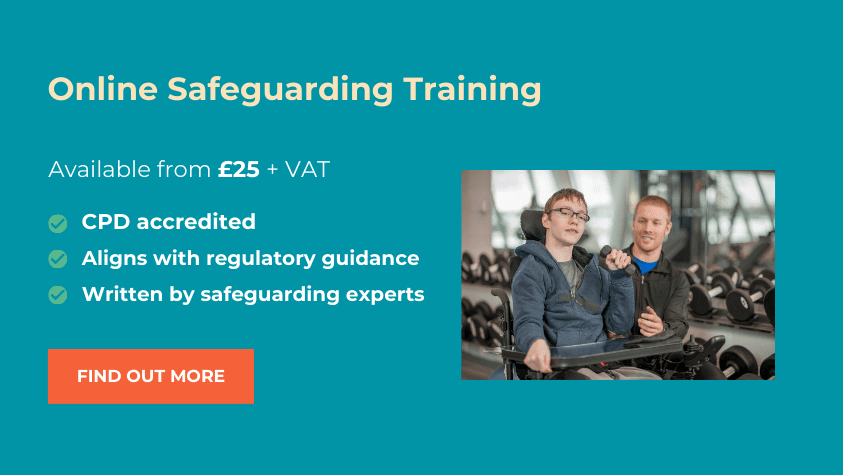What is a safeguarding concern?
The question ‘What is a safeguarding concern?’ refers to any concerns about the safety or well-being of someone, especially those more susceptible, such as children, the elderly or individuals with disabilities. These concerns often stem from observations or beliefs that an individual might be facing harm, abuse, neglect or exploitation. This can manifest in various forms, including physical, psychological, financial, or sexual abuse or due to negligence. It could also include individuals is at risk of radicalisation or have been affected by other specific concerns like trafficking or female genital mutilation (FGM). In addition, safeguarding concerns can arise in a variety of settings, such as the home, at school or in a care home.
Anyone with information or observations suggesting that a person’s safety or welfare is at risk may raise this as a safeguarding concern. For those in roles with safeguarding duties, it’s crucial to identify not just actual incidents but also potential risks. The emphasis must be on preventing abuse or neglect. Therefore, it’s essential to spot and communicate these concerns promptly to ensure the safety and well-being of the person involved.
When a safeguarding concern is raised, the appropriate authority, such as social services, the police or relevant organisations, can investigate the concern, assess the risk level and implement necessary protective and support measures.
In this article titled ‘What is a safeguarding concern?’ we examine the definition of what a safeguarding concern might mean, as well as highlight the tell-tale signs of a safeguarding concern and offer guidance on addressing and reporting any potential safeguarding concerns, aiming to provide the right support for everyone.

How do you identify a safeguarding concern?
To identify a safeguarding concern, various signs might hint at potential abuse or a risk of it. Safeguarding training can shed light on prevalent signs and the various forms abuse might take. Even if your role doesn’t involve working with vulnerable or at-risk individuals, possessing this knowledge is beneficial. Here are some signs to be aware of:
- Dishevelled appearance or poor cleanliness.
- Non-accidental injuries like bruises, cuts or burns.
- Excessive shyness or nervousness.
- Aggression.
- Rapid and inexplicable shifts in mood or demeanor.
- Inappropriate sexual behaviour.
- Knowledge of inappropriate topics.
- Reclusiveness
- Depression or signs of poor mental health
.
If you observe any of these signs in individuals you come in contact with, consider reaching out to specialist helplines or organisations for direction.
How to raise a safeguarding concern
If you have a safeguarding concern, it’s crucial to act correctly. Here’s a best practice guide of the steps to follow on how to raise a safeguarding concern:
- Gather information: Collect all relevant details, including specific events, timings, locations, named individuals and list any supporting evidence or witnesses.
- Assess the urgency: Determine how urgent the situation is. If there’s an imminent threat, contact emergency services or the most appropriate authority immediately.
- Identify the appropriate authority: Determine which authority best addresses the specific safeguarding concern.
- Communicate your concern: Document your concern to the relevant authority clearly and precisely, along with all the gathered evidence.
- Maintain privacy: Ensure confidentiality throughout the process and only share the information with the appropriate authority handling the concern and individual(s) involved.
- Document your actions: Record all steps taken and communications for future reference.

Remember, when reporting a safeguarding concern, the Mental Capacity Act (2005) stresses the importance of involving the person in question in the conversation, ensuring their choices and needs are taken into account.
Conclusion
A safeguarding concern refers to any issues regarding the safety or well-being of an individual, particularly those who are more vulnerable. Acting upon these concerns is crucial in protecting the most vulnerable members of society, which includes recognising various signs and indicators. We have also outlined the proper procedure for reporting these concerns, emphasising the importance of addressing them sensitively and promptly, while following the correct protocols and respecting the privacy and needs of those involved.
Additional resources for helping you report a safeguarding concern
The NHS provides details about how to find your local authority safeguarding details.
You can find more guidance from The National Council for Voluntary Organisations about managing safeguarding concerns.
The NSPCC provide information about managing allegations against people who work or volunteer with children.
Interested in our safeguarding training?
We offer a comprehensive range of online and face-to-face safeguarding training courses that teach you the most common indicators of a safeguarding concern, including the signs of abuse and neglect. These courses also guide you in responding to these safeguarding concerns and provide a systematic process for reporting them.
Reach out to us at 01327 636989, email hello@smarthorizons.co.uk, or use the online contact form on our website if you need help choosing the course that’s the best fit for you.


